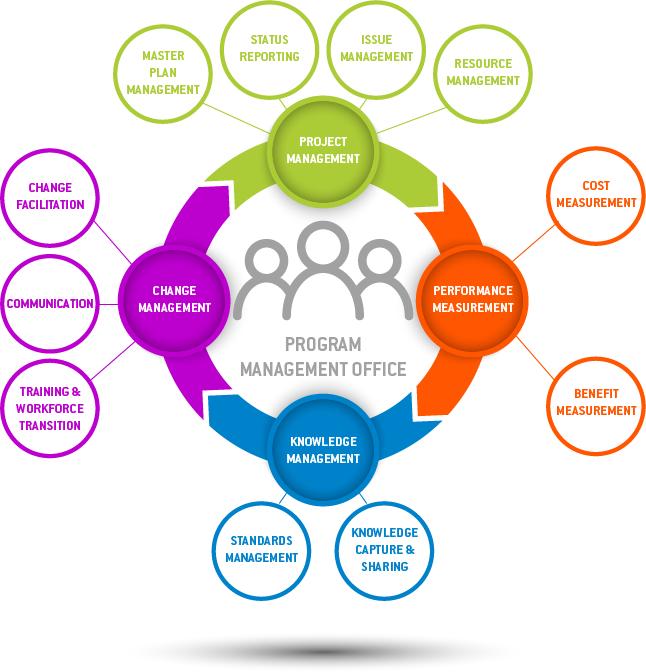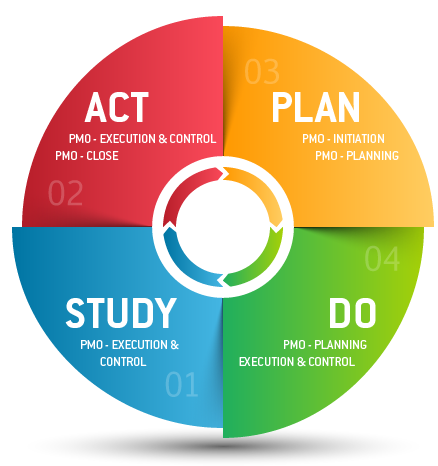

Consider the many Governments, Local Municipalities and Public-Sector Companies juggling various projects. Various departments are tasked in the management of each project working in silo not knowing what other departments are doing. Perhaps you plan to build a City Emergency Center? A full and dedicated logistic solution for transporting VIP’s with a robust mobile security system and armored vehicles? Provide an Infrastructure for Civil Security or Implement a series of IT initiatives for a specific Country or State? Any similar project can just be too big to handle internally. To be successful, it would need to be centralized by a unique Project Management Office (PMO).
JR Group is well-positioned to strategize with Stakeholders through providing Oversight Project Management. This is to aid in choosing, guiding and managing all participants while providing the Project Owner with real-time updates. JR Group serves as a sounding board, monitoring the progress for a successful campaign per specs, on budget and on time. Of course, expertise cannot be claimed in every aspect of such an endeavor. For this reason, each PMO is specifically tailored to the actual project’s environment. This is based on our expertise and experience dealing with developing countries along with our team’s subject expertise.
JR Group’s PMO encompasses Specialized and Highly-Skilled Members, to superintend each project from all perspectives. This includes Database/Data Warehousing, Communication, Integration, overall System Architecture and General Process Management. This ensures the most preeminent way the Project Owner can have thorough visibility of status from the Implementation of Requirements and General Infrastructure to Full Deployment and Ongoing Support. JR Group serves as a channel in which all Project Participants communicate, discuss implementation and ultimately, are held accountable for their corresponding part of the project’s puzzle. We consider ourselves a robust buffer entity allowing the Project Owner a hand to rely on for critical decision making relevant to any potential issues as the arise before, during and post-deployment.
The winning combination dedicated to the success of each project, is a recipe of JR Group’s expertise and success working with developing countries in conjunction with our partners, Manufacturers and Integrators of Comprehensive Varieties of Sensitive Information Technology Projects.
 |
While there are likely as many unique approaches, as there are Project Managers, there are two well-known Production Cycle Methodologies available today. These are the Agile and Waterfall Methodologies. As we evolve in our own area of expertise, JR Group is constantly reinventing what we consider best practice. As a recent example to address the incredibly complex requirements of a very large client initiative, we developed a “Super” Project Management Process. This process not only improved the method in which we delivered but also improved upon final delivery at project end. We did this by determining there was a way to combine the best features of Waterfall Development Disciplines with Agile Principles for superior results.
JR GROUP’s solution covers the following aspects:
Now, how do we get all that accomplished?

Strategically expending existing company resources and infrastructure from around the world, our dedicated team of experts will deliver daily focus on the initiative.
Our Project Assurance methodologies are based on the following best practices:
| IDENTIFY the real issues. |
SET REALISTIC time frames. |
ALIGN the work streams. |
LOOK BEYOND the indicators |
MANAGE the expectations. |
SEEK objectivity. |
| At the leadership level, we will develop an executive dialog that allows business and organizational issues to be identified and analyzed with clarity and without emotion. We will continue this dialog throughout the implementation process. We will remove organizational barriers both within the organizations and with third-party vendors. All parties will be aligned with the common goal of project success. | We don't rely on the existing schedule. Many organizations will set overly optimistic go-live dates despite the realities and limitations of the actual project. For example, the design phase extends, but the time line doesn't. We monitor project progress throughout the implementation and start discussions regarding key project dates early in the project's lifecycle to avoid downstream impacts. | We identify, align and continuously monitor work streams to ensure smooth progress throughout the organizations. Understand dependencies between work streams during project plan development to ensure proper resource allocations and project time frames. Because this is a cross platform, cross organization effort, we continue to monitor the interdependencies throughout the project. | Contrary to popular opinion, green may actually be red. Realistic monitoring and analysis of the implementation's progress can show that even though all project management indicators are green, warning signs indicate endangered components. If indicators are only addressing past phases, but not addressing readiness for upcoming project tasks and activities, they are definitely trailing indicators and not trustworthy predictions of the future. We anticipate and prepare the team for what’s coming. | Critical to maintaining control of the project, we manage the confluence of overly optimistic go-live dates against outside influences and interdependencies, such as available resources and realistic expectations. We set realistic expectations upfront and keep expectations current in the minds of project team members so that they don't lose sight of the forest while maneuvering around a tree. | As an outsider and a neutral actor, we conduct assessments as an outside expert to add both value to the project implementation and protection against the high cost of failure. Expertise delivers the know-how and the objective oversight needed to overcome organizational roadblocks. It also provides you with peace of mind. |
Employing a project assurance methodology empowers us to go beyond traditional project management barriers and gives us the answers we need to ensure project success. It helps us identify and resolve the strategic, tactical and intangible issues, and manage the human factors before issues become insurmountable. And best of all, project assurance gives us (and everyone else involved) peace of mind that the project is on the right track.
Proposed PMO’s structure
Our proposed PMO’s structure is highly scalable and will provide the stakeholder with a platform that can cost effectively grow and expand to meet both current and future requirements. We look forward to demonstrating a proven methodology for managing large scale projects combining the skills and resources that together with your selected partners we must offer.